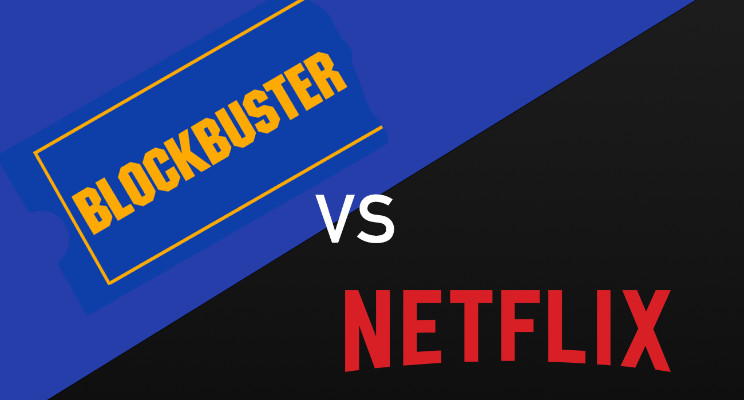Come on, come on … Let’s work together
As Wilbert Harrison said way back in 1969 …
“Together we will stand divided we’ll fall. Come on now people let’s get on the ball. And work together, come on, come on let’s work together. Now, now people. Say now together we will stand, every boy, girl, woman, and man.”
Those immortal words ignited a tune that topped the music charts again, and again by Wilbert Harrison to Bryan Ferry, to Bob Dylan, Dwight Yoakam, the Kentucky Headhunters, Status Quo, George Thorogood with Elvin Bishop, KT Tunstall, Ry Cooder with Buckwheat Zydeco, Jim Keltner, Jim Dickinson, Mike Elizondo, Darrell Mansfield, Climax Blues Band, Raful Neal and Leningrad Cowboys with the Red Army Choir.
Bringing people together is nothing new. From bringing people together to grow businesses to igniting revolutions. As the Beatles said in 1968 …
“You say you want a revolution. Well you know, we all want to change the world. You tell me that it’s evolution. Well you know, we all want to change the world.”
The 1960’s started the sexual revolution, the 1970’s the disco revolution, 1980’s the glam-volution, the 1990’s globalisation revolution, 2000’s the technology revolution and the 2010’s the equality revolution.
History is often easy to explain on reflection, yet the reality is that creating business and social revolution is complex. At its simplest, revolutions start with a seed — an idea or a cause worth fighting for. Someone willing to dig their heals in and clearly articulate their vision. To start lobbying or sharing the story, and from this they slowly build followers and supporters, who hopefully also start lobbying and sharing the story.
The seed starts insignificant, and then it germinates. The ecosystem and the diverse people within it find a level of symbiosis, a mutually beneficial relationship between different people and groups.
It all seems so simple. Yet, as we know it is much more complex than this. An infant ecosystem has the odds staked towards never flourishing. Attracting like minded people (the backbone of a revolution) is fundamental to success.
Team
Most revolutions—business or social—need to balance and engage the needs of multiple parties, which is highly complex and will likely implode. The initial idea or cause worth fighting for, hopefully sprouts into a team of implementers and builders—early staff, managers, board members, freelancers, leader(s) et cetera, who all need need to find harmony. The team is likely n ecosystem within itself, yet they are only the beginning.
Followers
Hopefully the core team is lobbying and spreading the story, and attracting supporters, followers and/or customers. Likely early adopters who beleive in the idea or cause. The followers are likely not homogeneous, but distinctive segments, diverse geographic markets, all with unique even clashing needs and expectations, and willingness to contribute financially or otherwise. They likely wish to see a mutually beneficial relationship — a product they have always needed or a sense of accomplishment at being part of a revolution they believe in, or supporting such worthy cause.
Partners
To create a revolution requires a network of partners, suppliers and connections able to necessary fertiliser to grow the ecosystem. Be this a competitive advantage or other point of difference such as cost efficiencies in manufacturing or access to expertise, suppliers and vital government and stakeholder network. Again, they will likely require a mutual benefit such as revenue and access to customers for their own business, or politicians with this own agendas to deliver. Most revolutions have many mission critical partners they need to be treated with respect to allow the ecosystem to grow. Even more so than followers and the team, partners will likely be diverse and typically requiring more tangible mutual benefit than feeling good.
The odds are stacked against such ecosystems finding the mutually beneficial symbiosis necessary to create a revolution. In biological ecosystems, negative interactions between biological organisms can be fatal. A parasitic interaction is one in which one member of the association benefits while the other is harmed. For example, one partner grows and the other weakens. In the extreme ecosystems can experience amensalism (one party is obliterated) or synnecrosis (detrimental to both). For example, supporting the needs of challenging followers, encourages the ideal follower to stop believing. Lack of strong leadership in recruiting and empowering the right team kills it. An unfair contract, can create financial instability, risk, stress and distraction.
The seed of an idea can grow into a festering and destructive ecosysem lacking the necessary symbiosis to grow a revolution. It all seemed so simple at the start, but as more people joined, the complexity grew, as did the competing needs, interests and desired mutual benefits.
And, this should largely be anticipated from the start. That few ecosystems grow in a linear and predictable projectory. More likely the growth is somewhat random and even chaotic, requiring constant nurturing. What is critical as a revolution ecosystem grows is finding and ever evolving the mutualistic symbiosis. Those involved are flourishing for their own individual benefit and working together towards a positive shared vision.
Think of an online marketplace like Amazon …
“Our vision is to be earth’s most customer-centric company; to build a place where people can come to find and discover anything they might want to buy online.”
It must be highly complex to balance the needs of shoppers, traders selling via Amazon, 350,000+ employees and likely huge network of other partners to prosper, but they have done that successfully. Likely following a different journey than Jeff Bezos anticipated, but the vision allowed his revolution ecosystem to flourish.
Similarly online wine membership tribe Vinomofo notes their mission as to …
“Unite a tribe with our love of wine, and food this adventure called life.”
While the story for the founders Justin Dry and Andre Eikmeier has been one of the joys and pains of building a wine revolution, the shared vision has allowed the ecosystem to flourish to build a tribe of wine lovers around the world. Balancing the mutual benefits of staff, 500,000 wine lovers, individual wine companies they help support and grow, and diverse partners globally.
Finding mutalistic sycronicity is the optimal path to working together to start a revolution. And, this likely comes from bringing diverse minds in towards harmony. Finding an itch that needs to be scratched or a cause worth fighting for. Businesses seeking greater access to targeted customers, or consumers finding it hard to find quality products to do what they love.
Unfortunately in creating revolution there is much risk of toxic interaction. Businesses that implode from forgetting their vision in the pursuit of pleasing all customers. Or, causes that sacrifice too much or loose focus.
It all starts with defining the seed of an idea and vision for the future. Rather than assuming the next game changing idea is BIG, the most likely idea is actually small, and seemingly too simple, solving an inherent problem or just making the complex easier.
As ecosystems grow, the conflicting needs of parties can grow. This stop the idea ever flourishing, like a garden growing more weeds than beauty. Keeping the seed simple, and vision clear is likely the optimal path to working together to achieve the revolution.




